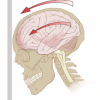Jennifer Aiello
This user hasn't shared any biographical information
Homepage: http://dnalc.org/about/staff/aiello.html
Posts by Jennifer Aiello

Compulsive Hoarding
Nov 10th
Many of us have seen the variety of shows lately on TV that highlight a behavior known as compulsive hoarding. Shows like “Hoarders” and “Hoarding: Buried Alive” give insight into the severity of this condition. On the shows, there is a person living in conditions that are, in no other words, unlivable. Things such as newspapers, magazines, clothes, boxes, knick-knacks, and food are piled in every available space in the home making walking through the home hazardous.
So what exactly is this condition that is being portrayed on these TV shows? Compulsive Hoarding is an anxiety disorder that affects as many More >

Coffee Consumption and Depression
Oct 9th
I love coffee. My family loves coffee. At any time of the day I have access to 5 ways to quickly make a cup. Is this unusual? According to many statistic counts- not really. Americans love their coffee. Over 80% of Americans consume coffee- that’s over 400 million cups a day! Caffeine is our favorite stimulant. Interesting enough, men and women consume coffee for different reasons. Men drink coffee in order to get the job done and complete tasks. Women, on the other hand, use coffee to relax. For me, nothing’s better than a nice cup of coffee. Today there’s More >

Genetic Insight into ADHD
Sep 9th
Attention-Deficit Hyperactive Disorder, more commonly known as ADHD is one of the most common neuropsychiatric disorders and is the most commonly diagnosed behavioral disorder of children. It affects about 7 percent of school-age children in the United States; affecting more boys than girls. This disorder is characterized by inattentiveness, hyperactivity and/or impulsivity that are out of the normal range for child development.
A diagnosis of ADHD is based on the persistence of several conditions for 6 or more months. Inattention is characterized by a child being easily distracted, missing details, forgetting things, and difficulty in focusing, among others. Hyperactivity can be More >

Addicted to the Tan
Aug 22nd
Tanning is dangerous. Most people know this, yet why is it continuously something many cannot avoid? It has been known for a long time that UV rays damage DNA and can lead to skin cancer, including melanoma, premature aging and wrinkles. 120,000 new melanoma cases are diagnosed every year. A 2005 study showed that 92% of people knew the sun was dangerous but 62% of them still loved to tan. Over 30 million Americans visit tanning salons, as much as 1 million a day. 70% of them are women between the ages of 16 and 49.
Tanning is dangerous because it More >

The Dozing Brain
Aug 8th
Do you know people who swear that they can live on a few hours of sleep a night and be able to fully function the next day? Perhaps you’re one of these people. Well it seems that you really can’t “fully function” on less sleep.
Researchers at the University of Wisconsin- Madison conducted tests with rats that were kept up past their normal bedtime. The rats were given objects to play with to keep them awake. During play, electrodes were implanted in their brains to measure brain activity. The results were interesting.
It seems that sleep does not involve the whole brain at once. More >

It’s Like, Okay for Toddlers to Hear Your, um, Speech Stumbles
Apr 18th
Have you ever been accused of using too many disfluencies when you talk? Do you use the words um, uh, or like, a lot? Speech disfluencies are common in our every day speech and can have a variety of uses. They help us slow down what we’re trying to say. They help us repair mistakes. They also help stall time while trying to think of a new word. These words, even though commonly expressed in every day talk, it discouraged in the media. In formal settings, I’m constantly aware of my speech and try to consciously avoid using many disfluencies More >

A Step Towards Understanding Alzheimer’s
Mar 10th
Alzheimer’s disease is a debilitating disease where neurons in the brain die. These neurons are called basal forebrain cholinergic neurons and their job is to help the hippocampus retrieve memories in the brain. Alzheimer’s disease patients do not have the ability to retrieve memories. It’s not that those memories are lost, they just cannot be retrieved. In early Alzheimer’s, these special neurons die. Since there are so few to be found within the brain, their death can quickly become devastating.
Northwestern Medicine researchers have made a major discovery that can aid in understanding and treating Alzheimer’s. These researchers have taken human More >

The Firing of Developing Neurons
Feb 18th
At the University of Connecticut Health Center, researchers are now studying the development of neurons and their young firing patterns. It has been discovered that the neurons of fetuses as young as 20 to 21 weeks old fire in patterns that can be seen into adulthood. This is a glimpse into young nerve cells and can serve a basis to understanding what happens when brain development goes wrong.
The neurons fire pulses with periods of rest in between. This is commonly seen in sleeping adults. These pulses were seen between neurons located in the cerebral cortex. The cerebral cortex is involved More >

Overcoming Fear
Jan 18th
We all fear things. Fear itself is a basic survival instinct. It’s a natural response to a specific stimulus used to recognize danger and initiate fight-or-flight responses. Many common fears include ghosts, cockroaches, spiders, snakes, heights, water, enclosed spaces, tunnels and bridges, needles, exams, clowns and public speaking. These fears can be innate (you don’t know why you’re afraid of certain things) or they can be acquired by a frightening traumatic accident. For many people, their fears do not affect their quality of life. For some, however, fear can mean something completely different.
Post-traumatic stress disorder, or PTSD is a severe More >

Sports and Concussions
Dec 15th
We have all heard of concussions, but it seems to be not until recently that concussions are finally taken seriously. Many of our popular sports contain some sort of contact. Football is a very popular sport with many times, full contact. What about other sports such as boxing or mixed martial arts where contact, especially head contact is deliberate? Or in NASCAR’s car accidents involving vehicles traveling close to 200mph? Athletes are putting their brains on the line for their sport.
Over the past several years, many precautions were taken to prevent concussions and further damage to the brain following injury. More >
